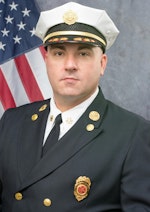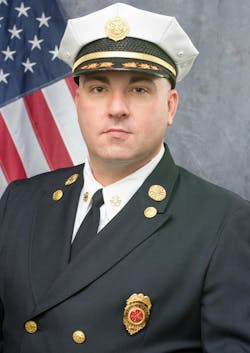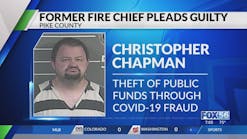In 2015, I transitioned to fire chief of the McKeesport, PA, Fire Department. I had ideas to move the department forward but quickly realized that I lacked the tools to implement them effectively. Yes, my time as a firefighter gave me experience as both a formal and informal leader, and serving on the executive board of our IAFF Local and in acting officer roles helped to shape my leadership skills. Still, I wasn’t fully prepared for the demands of leading an entire department.
It became apparent that leadership in the fire service is more than managing operations or ensuring safety. It involves guiding personnel through challenges, fostering a culture of growth, and balancing the needs of firefighters, the department and the community. Over the past decade, I had the privilege of leading a dedicated group while I developed both professionally and personally.
Motivation behind leadership
At the time when I stepped into the chief’s role, the department had stalled. We weren’t adopting recent technologies, improving processes nor embracing modern training ideas.
As an informal leader, I always encouraged growth and shared input when I could. However, following my transition, I knew that formalizing my leadership role was the only way to move the department forward and create meaningful change.
Leadership isn’t about giving orders; it’s about inspiring others to improve and adapt. I was motivated to challenge our team, to create opportunities for success and to drive us forward.
The chief’s job is to provide the tools and direction that are needed for the team to perform at its best. The determination was there, yet the process was a challenge. Motivating a department of firefighters to begin training and to progress would take time. Rome certainly wasn’t built in a day.
Leadership styles
At the beginning, I had minimal knowledge of leadership styles. Pursuing my bachelor’s and master’s degrees helped to change that.
Early on, I leaned toward a democratic style: Collaboration, open communication and inclusiveness were my focuses. I relied on my command staff to provide input and shape decisions. By involving them, I built trust and stronger team connections.
As I gained experience, I realized that leadership is about serving others, so I adopted a servant leadership approach. In the fire service, this means putting firefighters’ needs first, which means providing training, support and trust to help them to succeed.
Letting officers lead without micromanaging builds confidence and fosters growth. Trust is key; leaders are appointed for their abilities, and they should be empowered to act without constant oversight.
Servant leadership also prioritizes mental and physical well-being. Ensuring members have the resources and support to perform creates a positive, healthy work environment. In turn, this leads to better results, improved morale and stronger departmental success.
Key mentors
Throughout my career, I have had mentors who shaped my leadership style. A captain taught me about collective bargaining, navigating politics and balancing firefighter needs with organizational goals.
Another was a local chief who advanced from leading a small-town department to running a metro organization. His professionalism, demeanor and leadership set an example. His ability to inspire others highlighted the importance of influence over authority.
These mentors taught me that listening, transparency and clear communication are critical: In the fire service, effective communication keeps teams aligned, particularly during high-pressure situations. Influence—not coercion—creates trust and motivates members of teams to perform.
Investing in education and professional development strengthens leadership. It ensures that chiefs can manage day-to-day challenges, adapt to changes and provide strong guidance to their teams.
Professional development
Professional development is key for fire service leaders. It provides that leaders remain able to adapt to the ever-changing demands of the job. Keep in mind that development extends beyond firefighting skills; it includes dynamic leadership styles, which is a particularly important consideration given the newest generation of firefighters that’s joining the ranks.
My journey through higher education reshaped my leadership approach. It expanded my understanding of personnel management and decision-making. The growth aspect of learning forced me to identify weaknesses and to improve them. Self-awareness is crucial for any leader, and growing requires consistent effort.
Professional development helped to hone skills by broadening perspectives and providing practical approaches to lead effectively. In leadership courses, emotional intelligence, team dynamics, conflict resolution and ethical decision-making, among other concepts, were studied. These skills are critical in the fire service, where leaders often manage high-pressure situations that require quick yet thoughtful responses. Education allows leaders to analyze problems strategically, communicate solutions clearly and encourage teams to trust their judgment.
Augmenting professional development through higher education strengthens critical thinking and problem-solving abilities. Leaders learn to evaluate challenges from multiple angles, apply evidence-based solutions and adapt.
Further, the fire service and emergency scenes are dynamic. Education exposes leaders to the latest ideas and technologies that can improve operations of all sorts. By staying current with best practices and innovations, leaders create opportunities for the department and personnel.
Budgeting and writing abilities also are vital for department leaders. Overseeing finances means allocating resources for training, equipment and operations while maintaining fiscal responsibility. Being able to communicate fiscal requests clearly to supervisors or council helps when budget documents are requested.
Leaders also must stay informed about laws/regulations to ensure that the department operates ethically and effectively.
These administrative skills can be just as important as fireground tactics.
Formal education, training
National programs, such as the National Fire Academy (NFA) and the Fire and Emergency Services Higher Education (FESHE) initiative, instruct excellence and encourage a culture of lifelong learning, to benefit all stakeholders.
The NFA offers leadership training that focuses on challenges that fire officers face, both operationally and administratively. By learning from national experts and peers, I gained strategies and solutions that I brought back to my department.
The FESHE initiative helps to promote higher education in fire science and emergency management. It builds leaders by teaching skills in ethics, policy development, strategic management and other areas. By providing both theoretical knowledge and practical tools, FESHE prepares leaders for current and future challenges.
Learning must never end
Leadership in the fire service is about growth—both for yourself and for those who you lead. My time as fire chief has been a constant learning process. I have refined my leadership style, learned from mentors and committed to ongoing professional development. Each step has shaped me into the leader I am today.
For those who aspire to a leadership role, the journey requires dedication and humility. Professional development is the key to building skills to lead effectively. By investing in your growth, you empower others, strengthen your team and leave a lasting effect. True leadership lies in serving others, sharing knowledge and inspiring the next generation to succeed.

Jeffrey Tomovcsik
Jeffrey Tomovcsik is the fire chief for the McKeesport, PA, Fire Department (MFD). He has more than 26 years of experience in fire and EMS, including 20 years with the MFD. Tomovcsik serves as the second vice president of the Pennsylvania Career Fire Chiefs Association and on boards of several local organizations and the PIMAS Committee for the Pennsylvania Emergency Management Agency. He is an accredited Chief Fire Officer through the Center for Public Safety Excellence. Tomovcsik holds a bachelor’s degree in public administration from Point Park University and a master’s degree in leadership from Grand Canyon University.






